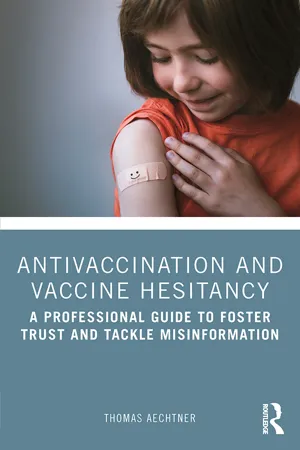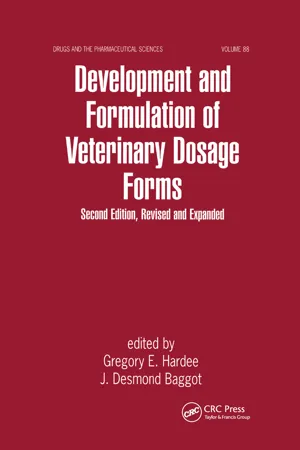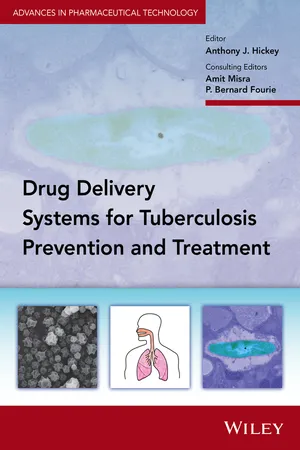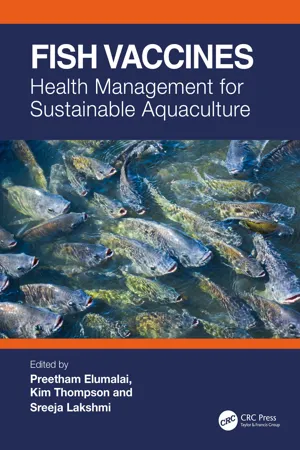Biological Sciences
Vaccine Ingredients
Vaccine ingredients typically include antigens, adjuvants, stabilizers, preservatives, and other substances. Antigens are the active components that stimulate the immune system, while adjuvants enhance the immune response. Stabilizers and preservatives help maintain the vaccine's effectiveness and safety during storage and use. Other ingredients may be included to ensure the vaccine's stability and efficacy.
Written by Perlego with AI-assistance
Related key terms
Related key terms
1 of 4
Related key terms
1 of 3
5 Key excerpts on "Vaccine Ingredients"
- eBook - ePub
Antivaccination and Vaccine Hesitancy
A Professional Guide to Foster Trust and Tackle Misinformation
- Thomas Aechtner(Author)
- 2023(Publication Date)
- Routledge(Publisher)
As noted above, antigens are the building blocks of pathogens, which are recognised by the immune system to trigger an immune response. They represent an active component of vaccines, which bring about immunity in vaccine recipients. Vaccines for different pathogens contain separate sets of antigens associated with the specific disease they are designed to produce immunity against. Antigen ingredients also vary according to the type of vaccine. Live attenuated vaccines and killed/inactivated vaccines contain a whole pathogen in either a weakened or a dead state. Subunit vaccines, toxoid, and mRNA vaccines on the other hand may include only specific antigen molecules, a deactivated toxin, or a piece of mRNA, rather than a complete pathogen.Adjuvants
These are ingredients that function to intensify and help target the body’s immune response against vaccine antigens. They do this by keeping the antigen close to the injection site, and by attracting immune cells to the area. Killed/inactivated vaccines and subunit vaccines require adjuvants to suitably alert the immune system of the antigen introduced to the body via the vaccine. The adjuvant does this by stimulating a stronger, and more extended immune response indicative of a reaction to a live pathogen. Since adjuvants boost immune responses, adjuvants usually result in lower quantities of an antigen being required per dose of a vaccine. In most cases, adjuvants are mineral salts such as aluminium hydroxide, aluminium phosphate, potassium aluminium sulphate, and calcium phosphate, which have well established safety track records (Chapter 4 ).41 Other adjuvants include naturally occurring oil-in-water emulsions, as well as fats taken from the surface of bacteria.42Expedients
This class of ingredient consists of Vaccine Ingredients other than the antigen and adjuvant active components, which are utilized during vaccine production, or which are present in the finished product to maintain the vaccine’s quality and potency. Expedients include the following varieties of ingredients:- Buffers.
- Gregory E. Hardee, J. Desmond Baggo, Gregory E Hardee, J D Baggot(Authors)
- 2021(Publication Date)
- CRC Press(Publisher)
Veterinary vaccines today may include inactivated (nonviable) bacteria, viruses or parasites, attenuated live microorganisms, attenuated live organisms carrying genes of a different agent (subunit antigens of different organisms), or soluble substances produced during bacterial growth. Experimental vaccines include the use of a synthetic analog of the disease-causing agent or DNA from a specific pathogen.It is apparent from this very brief history that the antigenic components (antigens) of animal vaccines have changed considerably over the last 150 years, as has their manufacture. Similarly, the technology to formulate these vaccines has also advanced. Methods to produce safe, efficacious, consistent, and stable products have been, and are continually, improving. It is the purpose of this chapter to review some of these formulations and hopefully provide a reference point for those seeking information in this area.II. Background
Regulatory agencies throughout the world vary in scope and practice with regard to veterinary biologics (4 , 5 , 6 ). The veterinary vaccine industry is dynamic. Technologies are evolving that are leading to safer, more effective, and more cost-efficient vaccines. As such, the terms used in the biologics industry is changing or are used differently in various parts of the world. In Europe, a killed bacterial is referred to as a bacterial vaccine (5 ), while in the United States, a killed bacterial product is referred to as a bacterin (6 ) and the term “vaccine” is reserved for an immunizing agent that contains live components. In addition to understanding basic definitions and some general regulatory concerns regarding biologicals, it is important to understand some general development strategies to better appreciate how vaccines are formulated.A. Basic Definitions
1. Biological Product
Refers to “all viruses, bacteria, sera, toxins, and analogous products of natural or synthetic origin, live microorganisms, killed microorganisms, and antigen immunizing components of microorganisms intended for use in diagnosis, treatment, or prevention of diseases in animals” (6 ).2. Toxoid
- Anthony J. Hickey(Author)
- 2016(Publication Date)
- Wiley(Publisher)
Figure 4.1 illustrates the process of vaccine preparation, beginning with formulation and ending with mass production and distribution. This is a simplified perspective of vaccine preparation, as it removes much of the administrative and bureaucratic review including clinical trials and the US Food and Drug Administration (FDA)-approval process. However, it defines the characteristics of vaccine design that must be evaluated for the initial submission of a successful candidate.Overview of the vaccine formulation and development process. Vaccine discovery, formulation, manufacture, and regulatory approval processes make the time to mass distribution a lengthy ordeal. Aligning the discovery with production will shorten the time from bench to bedsideFigure 4.1Starting with formulation, many vaccines require excipients and diluents for effective immunization. The best example of this is the addition of adjuvants to augment the generated immune response to the infectious agent. Many vaccines against other infectious pathogens use adjuvants to boost immunity to poorly immunogenic antigens [3–6]. Excipients influence the stability of the vaccine, and are chosen based on the intended route of delivery for effective administration [7]. Currently, the World Health Organization (WHO) estimates that approximately 50% of vaccines manufactured become inactive due to temperature instability [8]. This may be partially due to the fact that most vaccines are still liquid formulations, requiring refrigeration. Furthermore, injectable formulations run the risk of needle-stick injuries and generate additional costs associated with administration and training [9–11].Manufacture incorporates the feasibility of production. Vaccines must be produced in mass quantities, while maintaining Quality Control (QC), and Good Manufacturing Practices (GMP). The manufacturing component of design is often associated with cost–benefit analysis, producing vaccines that are safe, effective and affordable. Mass production, transportation, packaging, and administration instructions affect how the vaccine will be received and used, especially in the low- and middle-income countries (LMICs) where TB is more prevalent. This chapter aims to explore areas of research and development outside of antigen choice, an area in need of innovation and novel ideas.- eBook - ePub
- Roar Gudding, Atle Lillehaug, Oystein Evensen(Authors)
- 2014(Publication Date)
- Wiley-Blackwell(Publisher)
The antigenic component constitutes the specific moiety of a vaccine that is responsible for the induction of a protective adaptive immune response in vaccinated fish. Antigens can be made of purified proteins, glycoproteins, carbohydrates or peptides that encode the immunogenic component of a microorganism. Optimization of the antigenic component in a vaccine formulation includes the selection of the most protective vaccine strain, designing genetically engineered immunogenic proteins as vaccine antigens, as well as finding the optimal dose that induces the production of a protective adaptive response in vaccinated fish.7.5 Adjuvants
The various aspects of adjuvants include:- enhancing the immune response to the antigen while at the same time prolonging the duration of immune responses;
- modulating the breadth, affinity and specificity of antibody responses;
- stimulating the expression of potent cellular-mediated immune responses;
- increasing immunogenicity for weak antigens and seroconversion for low responders;
- promoting induction of mucosal immunity;
- facilitating the reduction of antigen doses and reducing the need for booster vaccinations;
- reducing antigen competition in multivalent vaccines.
7.6 Antigen Delivery Systems
Antigen delivery systems can be used to direct the pathway by which antigens are processed in the host. Antigens delivered into the intracellular compartments evoke a cellular immune response, while antigens deposited in extracellular compartments are neutralized by humoral responses. Therefore, the choice of delivery system can be used to evoke exclusively a cellular or humoral immune response. Thus far, delivery systems explored to channel antigens for fish vaccines into the intra- or extracellular compartments include the use of emulsion suspensions, biodegradable microparticles, and fusion of antigens with bacterial toxins. - eBook - ePub
Fish Vaccines
Health Management for Sustainable Aquaculture
- Preetham Elumalai, Kim Thompson, Sreeja Lakshmi(Authors)
- 2023(Publication Date)
- CRC Press(Publisher)
2 ).7.2 THE ORIGINS AND FUNCTIONS OF ADJUVANTS IN VACCINE PRODUCTION
7.2.1 History of the Discovery of Adjuvants
The word adjuvant refers to the Latin word adjuvare meaning “to help.” The importance of adding substances to increase immune responses was discovered by chance like many other medical innovations. The history of the discovery of adjuvant dated back to the early 20th century to the works of Gaston Ramon and Alexander Thomas Glenny. Gaston Ramon, a French veterinarian, observed the higher antibody titers in horses when the animal developed inflammatory abscesses in Diphtheria vaccine injection sites. Ramon added different substances such as tapioca, bread crumbs, saponins, kaolin, calcium, and magnesium to the toxoid and observed the increased production of specific antibodies in injected animals. During the same time, Glenny, a British immunologist, used potassium aluminum sulfate to purify Diphtheria toxin to reduce irritability. He observed a single injection of washed toxoid precipitates was able to elicit higher immune responses with no irritating effects than the soluble toxin (3 ,4 ). Since then, aluminum was used in both human and animal vaccines. Another adjuvant experimented with was oil emulsions with mineral oil-in-water. However, vaccine adjuvant development has been a slow process owing to safety concerns resulting in alum being the only adjuvant licensed in the human vaccine for a few decades. In the 1990s, a few other substances such as MF59, AS01, AS03, AS04, and cytosine phosphoguanosin (CpG) 1018 were included in the license list as human vaccine adjuvants (5 ). Later in the 1990s, researchers discovered that the antigen-specific B- and T-cell responses can be activated by the activated dendritic cells (DCs) and the DC activation is governed by the activation of toll-like receptors (TLRs). The TLRs are expressed in antigen-presenting cells (APCs) such as DCs, which sense PAMPs in microbes. More pattern recognition receptors (PRRs), which can activate adaptive immune responses, were identified leading the adjuvant research to search for molecules that are able to bind with these receptors as possible vaccine adjuvants (5
Index pages curate the most relevant extracts from our library of academic textbooks. They’ve been created using an in-house natural language model (NLM), each adding context and meaning to key research topics.
Explore more topic indexes
Explore more topic indexes
1 of 6
Explore more topic indexes
1 of 4




